3 Like an Object in a Museum
The Violence of the Archive, Labels, and Filipina/o Weaponry
Joshua Bender
The artifact I elected to meditate on was an iron shortsword, likely from the south of the Philippines. The sword has an octagonal wooden grip and pommel, as well as a curved iron guard. The blade itself is slightly curved and rusted, chipped in quite a few places. The sword is housed in a sheath made of two pieces of wood held together by a leather band at the tip, and stitched along the sides. It bears a lot of similarities to other traditional Filipina/o swords from the eighteenth and nineteenth centuries, but it bears no exact resemblance to any of the others I could find at the Burke or from looking through archives online. Unlike most ceremonial or decorative weapons found in the Philippines in the seventeenth, eighteenth, and nineteenth centuries, this sword does not have a curved handle, but it is rather fairly stout and short. Its blade also differs significantly from most of the weaponry we observed at the museum: rather than being cut into a sort of wave, the blade is relatively straight, except for the curve to the tip at the end. Most of the items typically looted from sites of violence and relocated to museums tend to be ornamental or ceremonial pieces, used in rituals that were feudal or religious. But the fact that this shortsword looks different and plain makes me think this weapon was a more commonplace artifact, one used not by nobility, but by the masses.
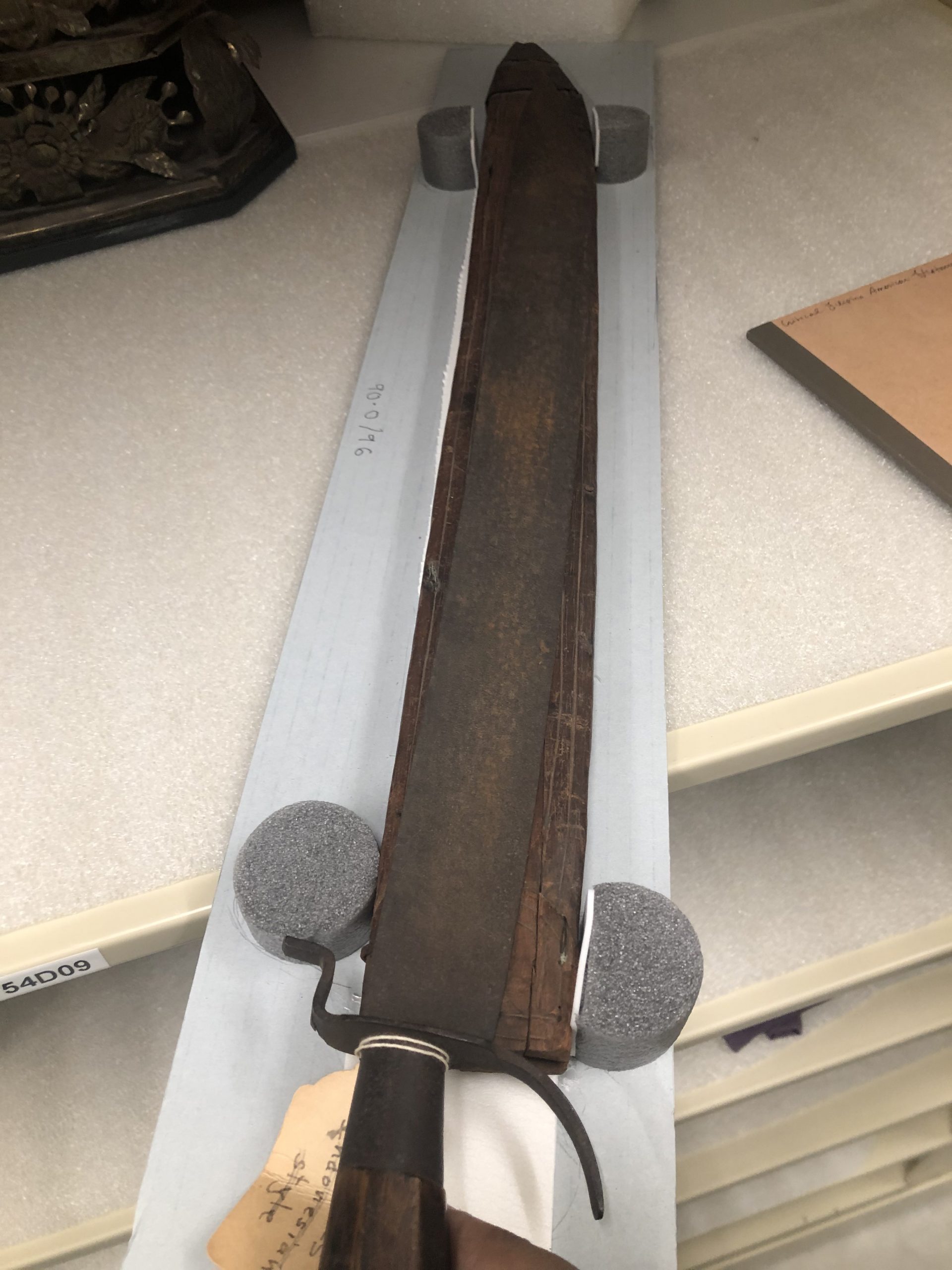
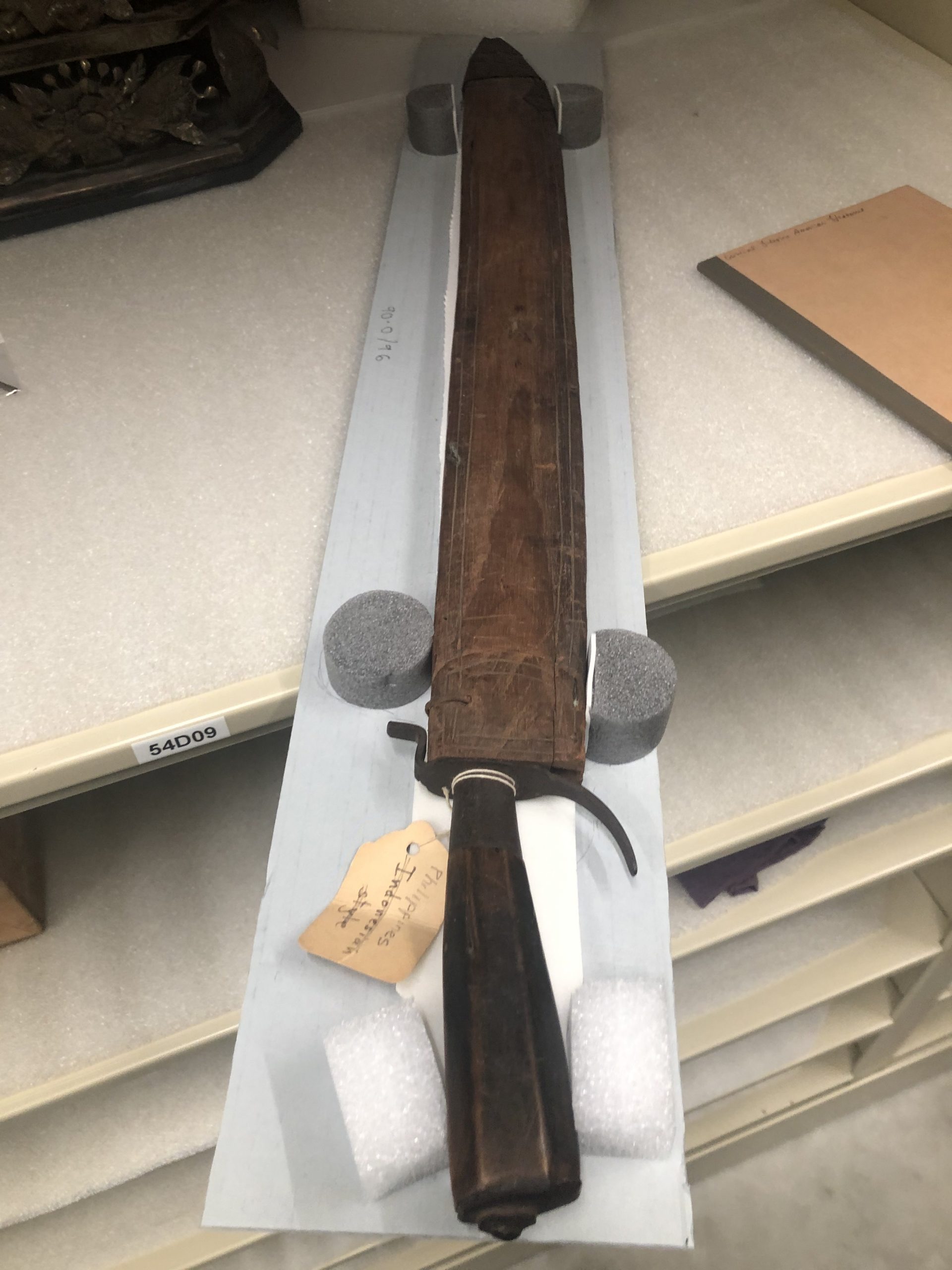
You can see the shortsword I selected here, in Figures 1 and 2. The first shows the shortsword with its sheath on, while the second depicts the unsheathed blade. As you can see, it bears little resemblance to the Filipina/o kris, a sword often used for stabbing at one’s enemies, as noted in Figure 3. Figures 4, 5, and 6 are a few examples of items I found through my research that bear some resemblance to the shortsword I was originally interested in. Figures 4 and 5 are nineteenth-century Indonesian shortswords, and Figure 6 is an eighteenth-century Spanish rapier. We can see that the swords all share some similarities: the guard on Figure 4 is the closest I could find to the guard on the original, and that seems to be the most ornate part of the sword. But it also serves an important function, obviously: the guard is meant to protect the user’s hand from incoming blows by the opponent, which makes me think that the original shortsword was designed for combat rather than something more mundane like hunting or butchering meat, though it may very well have served that purpose as well. Figure 5 has a similar curve to the original artifact, though I think that is more a common trait of many shortswords both in antiquity and contemporarily.
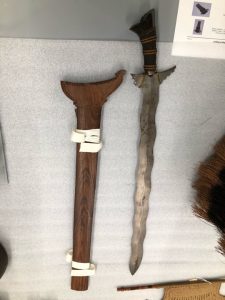
What is interesting about these shortswords, Figures 1/2, 4, and 5, is that despite the clear European influences from a cultural and political perspective, the weapons themselves are mostly unique from the colonizing bodies: particularly, I think the design is most un-European in its blade. All of these shortswords have a flat and a sharp side, meaning that they were designed for slashing rather than stabbing, as we see in many European weapons. Consider the rapier, Figure 6, which has a thin blade and a pointed tip, with sharp edges on both sides. The rapier was designed for quickly parrying and stabbing, which also explains why its guard covers much more of the hand. However, it would be incorrect, I think, to say that the shortswords exist completely without the influence of their colonizing bodies, and as we can see there may have been some Spanish influence on the design of the Filipina/o shortsword here. Both Figures 1 and 6 have straight grips and rounded pommels. While European weapons, especially those we see in museums, were almost always more elaborate or decorative—for example, note the intricate designs and decorative guard on the Figure 6—we can see that the basic design of the grip and pommel are the same.
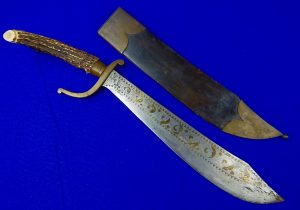
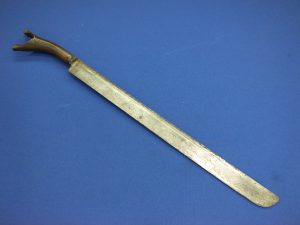
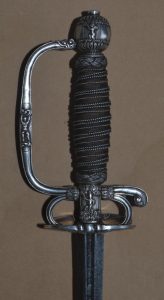
Figure 7 highlights the similarities I’ve noted previously between the shortsword I found at the museum and the ones I found through online research. As one can observe, we have the curved guard, the curved tip at the end of the blade, the flat and sharp edges, the round pommel and straight grip. Noting all of these similarities highlights for me the difficulty of classifying something when all we have to build on is its appearance, which also speaks to the disconnect many Filipina/o American youths may feel in having no concrete, physical connection to the Philippines. But what does it mean that we are able to hold these artifacts, to observe them like objects in a museum—which they are—where we are literally holding these items? And how can we think about this as an avenue for the ways we understand racialization, especially of Filipina/os? How do the observation and categorization of stolen artifacts in the possession of a museum—itself a site of violence—correlate to the ways in which Filipina/os are observed and categorized by colonizers?
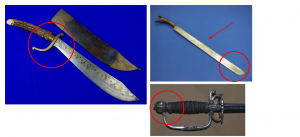
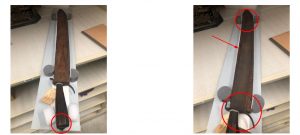
I think what attracted me the most to this item was that it was initially labeled as an “Indonesian style” shortsword, and sometime later, this label was crossed out and the word “Philippines” was written in its place (see Figure 1). For me, this presented an interesting avenue into interrogating the ways in which items are classified by the museum, and what that means for the peoples from whom these items are taken. Historically miscategorized and recategorized, much like the Filipina/os during the colonial periods of Spain and the United States (as well as during the nominally postcolonial period, for instance during the court case of Roldan vs. LA County), these artifacts can be seen as emblematic of the ways Filipina/os navigate their colonial surroundings. At the very least, how are we read by non-Filipina/os, for instance, by archivists and by the museum? We exist as an object of study and there is violence in the ways we are portrayed and erased. Of course, this very well could have been an honest mistake in mislabeling, but overlooking entire categories of people is itself a violent act. We see this articulated in Oscar V. Campomanes’ writings on the institutional invisibility of Filipina/os, where he observes the ways Filipina/os are erased from historical narratives and recategorized in order to fit a particular American colonial history. This logic of forgetting still persists in the contemporary United States, and we can see it even in the labeling of a museum artifact. That the colonizing body of the Philippines—the United States—was able to mislabel this artifact and this label itself was not changed until, I am sure, its incorrectness was pointed out by a member of the Filipina/o community here in Seattle, says something powerful about the logic of forgetting, of willful erasure of the Philippines as part of an imperial nation-building project in the United States.

